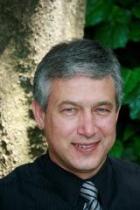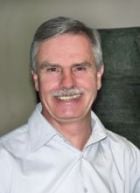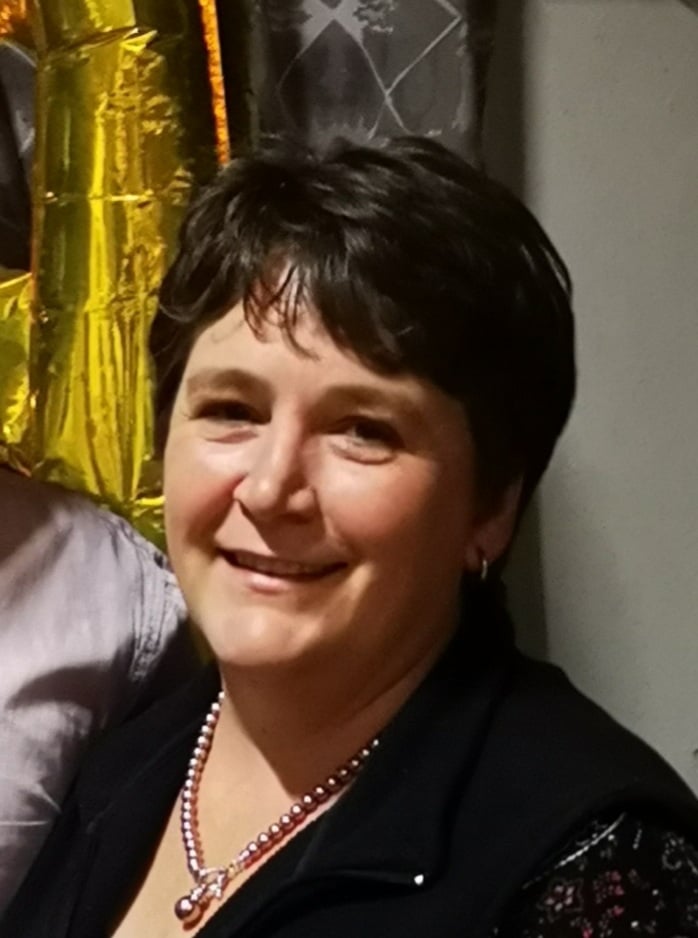Churches of a reformatory origin (rooted in the Calvinist Reformation of the 16th century) were established at the Cape from 6 April 1652 onward. The Cape Church was a branch of the Dutch ‘trunk’ and fell under the Klassis (Ring) Amsterdam throughout the Dutch occupation, which ended in 1795. The first pastor at the Cape was Rev Johan van Arckel, who arrived there in 1665.
Churches of a reformatory origin (rooted in the Calvinist Reformation of the 16th century) were established at the Cape from 6 April 1652 onward. The Cape Church was a branch of the Dutch ‘trunk’ and fell under the Klassis (Ring) Amsterdam throughout the Dutch occupation, which ended in 1795. The first pastor at the Cape was Rev Johan van Arckel, who arrived there in 1665.
The Great Trek of the 1830s, a key event in the history of South Africa, divided the country politically and, as far as the church was concerned, prepared the way for the establishment of the three Afrikaans churches before 1860. There were several reasons for the breach between the Trekkers and the Cape Church, but ultimately the problem was that Cape ministers of religion were unwilling to serve the Trekkers and not a single one was prepared to join them.
A church council was elected in February 1837 and subsequently, on 21 May 1837, the former missionary Erasmus Smit ordained himself as their minister. The Cape Church had been known as the Netherdutch Reformed Church since 1824, and this name was retained by the Voortrekkers. (After 1842, the Cape Church would become known as the Dutch Reformed Church.)
The Trekkers established congregations in Natal, the Free State and Transvaal. From 1841 to 1846 they received assistance from an American missionary, Daniel Lindley. In 1850 the congregations in Natal and the Free State were incorporated into the Cape Church.
However, in the Transvaal, the birthplace of the Reformed Church, things developed differently. In the absence of a pastor, the church continued under the leadership of elders such as FG Wolmarans and PJ van Staden. The first congregation in the Transvaal was established in Potchefstroom in 1842. In 1850 this was followed by the establishment of another in Rustenburg. The Church in the Transvaal was not prepared to surrender its independence by being incorporated into the Cape Church, which would have placed it under the authority of the British governor. Efforts to obtain the services of a pastor from the Netherlands resulted in the appointment of Rev Dirk van der Hoff as pastor in Potchefstroom in 1853. He became the first pastor appointed in the Transvaal. During the same year the first General Church Meeting was held in Rustenburg. After Van der Hoff had served as the only pastor in the entire Transvaal for eight years, he finally received help in 1861, when Rev AJ Begemann was inducted as pastor for Pretoria and Rev GW Smits as pastor for Rustenburg. In 1864, the Rev NJ van Warmelo was also inducted as pastor.
During the period 1860–1880, the church continued to grow and ten new congregations were established. Formal discussions with a view to uniting the Netherdutch Reformed Church and the Dutch Reformed Church in the Transvaal were held from 1882 (the Reformed Church never participated in these discussions). Despite some degree of dissatisfaction, the unification was finalised in Pretoria on 7 December 1885 and the united church became officially known as the Dutch Reformed Church.
However, the so-called relieving congregations of Pretoria (since 1869 there were two congregations within the city boundaries) did not unite. The hub of the congregation was near Bronkhorstspruit on the farm Witfontein, which belonged to Elder MJ Prinsloo. By not uniting, this congregation became the ark of the NRC. Words spoken during a meeting of the congregation on 13 February 1886 soon became winged words: ‘We are happy to remain what we were before and still are, namely Netherdutch Reformed.’Following this declaration, many members of formerly Reformed congregations who preferred to remain Reformed, rather than to unite, came to the fore. Rev MJ Goddefroy, who had been inducted as the pastor for Pretoria, Middelburg and Trichardtsfontein in 1887, would play a leading role in the reconstruction and reorganisation of the Reformed Church.
The war of 1899-1902 caused serious disruptions in the Church. Many members fell in battle and died in concentration camps. Pastors and elders became prisoners of war and were sent away and several churches and archival documents were destroyed by fire. After the war, several new and able pastors were appointed in the twenty congregations. The first of these was Rev LE Brandt, who came from the Netherlands and would play a leading role over an extended period. The first congregation outside the Transvaal was established in Vrede in the northern Free State in 1905.
During the 20th century the Church expanded and the membership increased from 25 423 in 1908 to 133 485 fifty years later and 142 089 in 2006. The number of congregations has increased from 20 in 1910 to 183 in 1956 and 312 in 2006.
Since 1909 the Church’s congregations have been organised in convocations.
The first edition of the Church’s official mouthpiece, De Her ormer, appeared in 1899, but its publication was suspended during the war and could only be resumed in 1909. The Church’s information publication, Die Almanak, was published for the first time in 1907, and in 1990 the monthly magazineKonteks was launched.
Although plans to make theological training available had been discussed as early as in 1890, this was delayed for various reasons. Meanwhile the very capable Pretoria pastor, Prof PJ Muller, trained two students, JJ Prinsloo and JJ Kuhn, as pastors and they were inducted in 1909. During the same year the first board of curators was appointed with a view to the establishment of a training centre. In 1917 the Faculty of Theology at the Transvaal University College (now the University of Pretoria) was established.
Despite initial prejudice, the call to missionary work was initially promoted within the Netherdutch Reformed Church by individuals such as Rev HCM Fourie. From 1928–1945, missionary work was undertaken by the Netherdutch Reformed Mission Society (Pty) Ltd. In 1945 the Church itself accepted responsibility for this task, but the work would only really come to life in 1951, under the leadership of Dr (later Prof) PS Dreyer. The Mission Council, as it later became known, was determined to establish its own training facility. From 1961 training was offered in cooperation with the Netherdutch Reformed Church at Turfloop. In 1979 the training facilities were moved to the University of the North and became known as Reformed Theological Training. Since 1985 the RTT has been established at Klipdrift near Hammanskraal, and in 2006 it was renamed the Africa Institute for Missiology (AIM).
The Reformed Church has made its mark in respect of social issues relating the child neglect and poverty. The Netherdutch Reformed Orphanage (NHW) in Krugersdorp was established in 1923 and was later expanded. As time went by, the General Council of Deacons became intensely involved in this work. The problem of poverty, in particular poverty among urbanised Afrikaners after 1902, was regarded by the Church as a matter of grave concern. Since 1924, the Support Council has undertaken numerous projects that are still continuing in various forms. The care of the aged has been a top priority and the Church’s first home for the aged, Ons Tuis, was opened as early as in 1929.
With the establishment of the Netherdutch Reformed Sisters’ Association (NHSV) in 1940 the role of women in the church became organised. The charitable work done by the NHSV is of immeasurable value.
Since 1979, women have been allowed to serve as deacons, elders and pastors. The NRC’s first female pastor was Prof Yolanda Dreyer, and Dr Elsabé Kloppers was the first female pastor that obtained a doctorate in Theology.
With regard to liturgy, the Church bade farewell to Dutch as the language of the pulpit in 1933 when the first translation of the Bible into Afrikaans became available. The first Afrikaans hymnal followed in 1944. In 1978, and again in 2001, new versions were approved for singing in church and in 1983 a new translation of the Bible was published.
The emblem of the Netherdutch Reformed Church of Africa consists mainly of the coat of arms of the former South-African Republic (ZAR) around which the name of the Church has been added. It illustrates the close ties that existed between the ZAR and the Netherdutch Reformed Church which, according to Article 20 of the ZAR’s constitution, was the state church. The first version of the emblem was approved by the ZAR Parliament (Volksraad) in 1858. Subsequent additions were made and in 1870 the well-known emblem appeared on postage stamps. The ‘Vierkleur’, which was designed by Rev Dirk van der Hoff and was used as the national flag from 1858, also appears on the emblem. The Church did not use the emblem during the 19th century. In 1879, the General Meeting of the Church approved the use of the emblem as a seal, but this was never realised. In 1924, the emblem was used as the Church emblem for the first time on the publication Die Almanak. From 1925, Die Hervormeralso started using the emblem. Since then attempts have been made to improve the heraldic and aesthetic quality of the emblem and in 1992 the General Meeting of the Church obtained approval for the old version of the emblem. In the modified ZAR emblem the eagle and the lion conform to a greater extent to heraldic requirements, the flags are arranged slightly differently, and the shield is larger and more oval in shape.
This metaphorical portrayal of Jesus washing the disciples’ feet is used to convey something of the essence and calling of our church. The large figure whose feet are being washed represents the world to which the gospel is being preached. The smaller crouching figure represents Jesus (and His Church on earth) who serves with His entire being. The curved lines represent the dimensions that have to be penetrated by the gospel.
This metaphor illustrates the relationship between the church and the world. The service character of the church is dominant: the church must serve. Churchgoers do not always recognise this. Often we are not even prepared to serve each other, leave alone the world! The power of the portrayal is in the relationship between the size of the crouching figure that is serving and taking care of the much larger and stronger figure.
This serving relationship may not be ignored. This is what Jesus’ question to His disciples in John 13 refers to: ‘Do you understand what I have done for you?’ If you understand the essence of what I have done, you will be able to go forth and do the same for the world. However, if you think that you are more important than Jesus Christ, you will think of ways to ignore this command. Jesus also considers it to be necessary to remind the disciples that they are not more important than Him: ‘I tell you the truth, no servant is greater than his master, nor is a messenger greater than the one who sent him’ (John 13:16).
Do we understand that we are not greater than Christ? Do we understand that for this very reason we should not expect to be treated differently from the way Christ was treated? Do we understand that we are therefore slaves that have to serve the world unconditionally – even if it means that we will be trampled upon, insulted, despised and even killed? Do we understand that we have no claim to rights and privileges, but must serve the world as Christ did?
Dr AG UngererPosition: Chairperson
|
 |
Rev. PF ViljoenPosition: Deputy chairperson
|
 |
Clarika HattinghPosition: Departmental administrator |
 |
Copyright © University of Pretoria 2025. All rights reserved.
Get Social With Us
Download the UP Mobile App